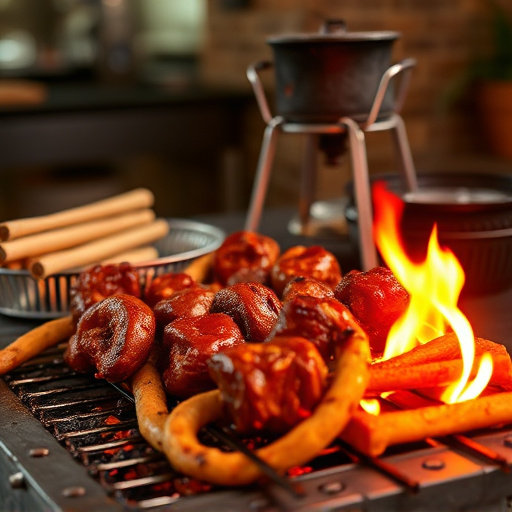This guide provides a comprehensive tutorial for preparing mouthwatering BBQ beef ribs in the oven, focusing on specific cuts, dry rubs, and slow-cooking techniques. It recommends a unique brining method for enhanced flavor and tenderness, followed by an indirect heat cooking process with precise temperature control. The text emphasizes the importance of personalized seasoning blends, basting, and glazing to achieve the perfect caramelized exterior. After resting, these ribs are best served with classic sides, ensuring a satisfying dining experience.
Unleash your inner BBQ master with our simple oven method for cooking mouthwatering beef ribs. This comprehensive guide takes you from understanding rib cut selection to mastering the art of slow cooking and glazing. Learn how to create a flavorful dry rub, brine for tender meat, and use indirect heat to perfection. We’ll walk you through every step, ensuring your BBQ beef ribs recipe turns out deliciously.
- Understanding BBQ Beef Ribs: Cut Selection and Preparation
- Dry Rub Basics: Creating Your Own Flavor Blend
- The Art of Slow Cooking: Oven Temperature and Time
- Moisture Matters: Brining for Tender Ribs
- Indirect Heat Technique: A Step-by-Step Guide
- Glazing for the Final Touch: Sauces and Finishing Tips
- Resting and Serving: Ensuring a Delicious BBQ Experience
Understanding BBQ Beef Ribs: Cut Selection and Preparation
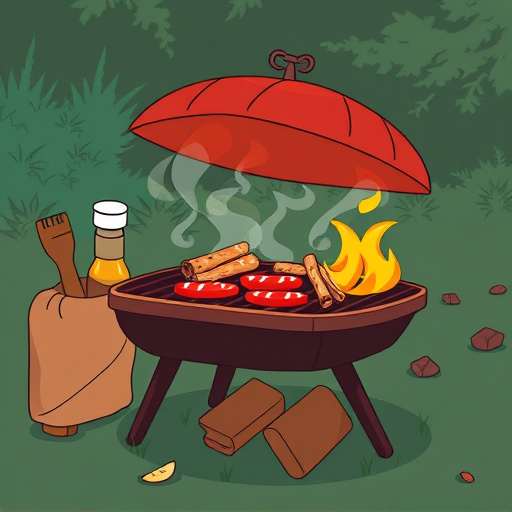
BBQ beef ribs are a favorite among meat lovers, and preparing them in an oven can be a simple yet effective method for achieving tender, flavorful results. When it comes to BBQ beef ribs, understanding the cut is key. Look for ribs with a good balance of meat and bone—the meatiest part should be between the fourth and sixth rib, often referred to as the “baby back” or “spine” section. This area provides both flavor and tenderness.
Before cooking, preparation is crucial. Remove any membrane (a thin, shiny film) from the bone side of the ribs, as it can be tough. Trim excess fat, leaving a small layer for flavor and moisture. Dry rub is an essential step in many BBQ recipes; it involves coating the ribs with a mixture of spices to enhance their natural flavors. A simple dry rub can include brown sugar, paprika, garlic powder, salt, and pepper. This process helps to caramelize the sugars during cooking, creating a delicious crust.
Dry Rub Basics: Creating Your Own Flavor Blend
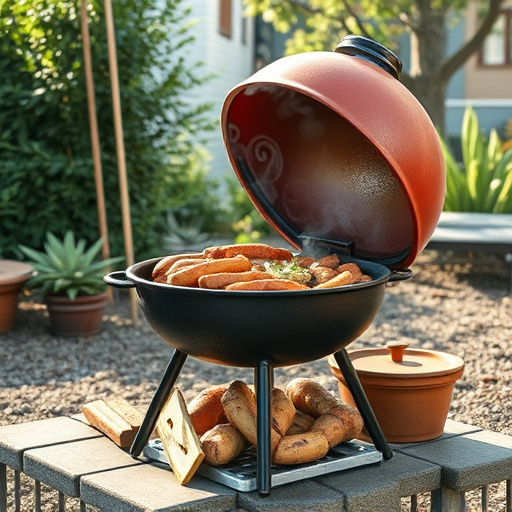
Creating your own dry rub is a simple yet effective way to elevate your BBQ beef ribs recipe in the oven. Dry rubs are seasoning blends that enhance the flavor of meat by combining various spices, herbs, and seasonings. Start with a base of salt and pepper, as these are essential for any good dry rub. Then, add flavors like garlic powder, paprika, brown sugar, chili powder, and onion powder to create depth and complexity. Customize your blend based on personal preference – perhaps adding cayenne pepper for heat or dried herbs like thyme or rosemary for an earthy twist.
Mixing your own dry rub allows you to control the coarseness of the spices, ensuring they cling evenly to the ribs. It also gives you the freedom to adjust the balance of flavors to suit your taste. Experiment with different combinations until you find your perfect blend. Once prepared, rub the mixture generously over both sides of the beef ribs before placing them in the oven for a slow and tender cooking process.
The Art of Slow Cooking: Oven Temperature and Time
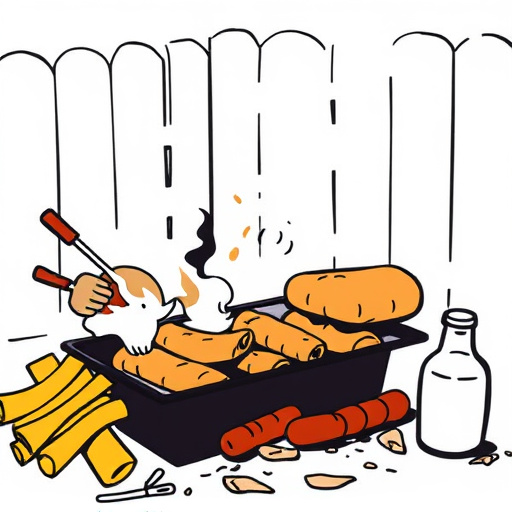
The key to achieving tender, succulent BBQ beef ribs in an oven lies in mastering the art of slow cooking. Unlike traditional grill methods that rely on high heat and direct flame, oven-roasted ribs benefit from lower temperatures and prolonged cooking times. Typically, setting your oven between 250°F (120°C) to 300°F (150°C) is ideal for slow-roasting ribs until they’re tender enough to easily pull apart with a fork.
The time required will vary depending on the size and thickness of your ribs, but generally, plan for 2 to 3 hours. This slow and steady approach allows the collagen in the meat to break down, resulting in ribs that are incredibly juicy and tender. Regularly basting them with BBQ sauce or a dry rub during the process can enhance flavor and create a delightful caramelized exterior.
Moisture Matters: Brining for Tender Ribs
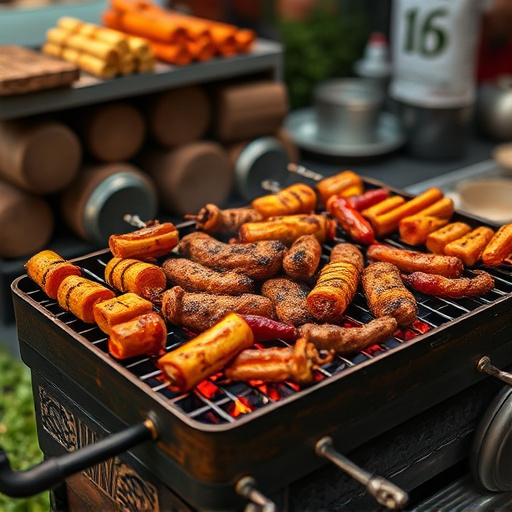
Moisture is key when it comes to achieving perfectly tender BBQ beef ribs in an oven. Before cooking, brining is a simple yet effective step that can significantly improve the texture and flavor of your ribs. This process involves soaking the ribs in a salt and sugar solution for several hours or even overnight. The brine helps to break down some of the muscle fibers, making the ribs more tender after baking. It also adds flavor by drawing out natural juices and enhancing the meat’s ability to retain moisture during cooking.
When brining your BBQ beef ribs recipe, make sure to use a combination of coarse salt and brown sugar for optimal results. The coarse salt helps to draw out moisture from the meat, while the brown sugar provides a rich, caramelized flavor. After brining, pat the ribs dry before placing them in the oven. This step is crucial as it ensures even browning and prevents the ribs from becoming soggy during baking.
Indirect Heat Technique: A Step-by-Step Guide
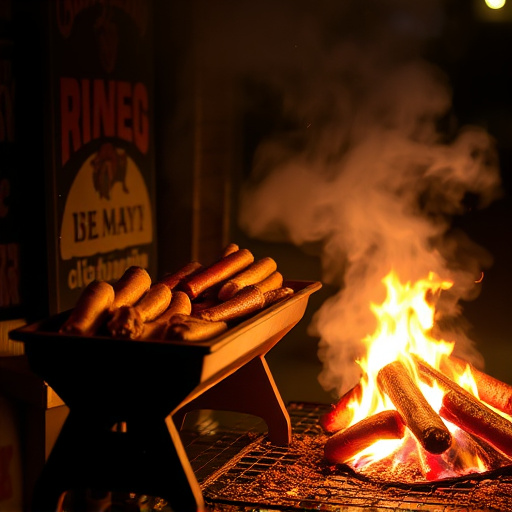
The indirect heat technique is a simple and effective method for cooking BBQ beef ribs in an oven, resulting in tender, juicy meat with a mouthwatering smoky flavor. Here’s a step-by-step guide to help you master this approach. First, preheat your oven to 250°F (120°C). Line a large roasting pan with aluminum foil for easy cleanup and place a rack in the center. Place the beef ribs on the rack, meaty side up. Create a barrier around the ribs by placing foil-wrapped bricks or heavy objects on either side to prevent direct heat exposure. This step ensures even cooking without burning the outer layer.
Next, brush a generous amount of BBQ sauce (choose your favorite) on both sides of the ribs. You can also opt to add other seasonings or dry rubs if desired. Set the pan in the preheated oven and let it cook for approximately 3 hours. After this initial cooking period, remove the foil and bricks, and brush another layer of BBQ sauce over the ribs. Increase the oven temperature to 400°F (200°C) and continue baking for about 30 minutes or until the desired level of caramelization is achieved. Keep an eye on them to prevent burning.
Glazing for the Final Touch: Sauces and Finishing Tips
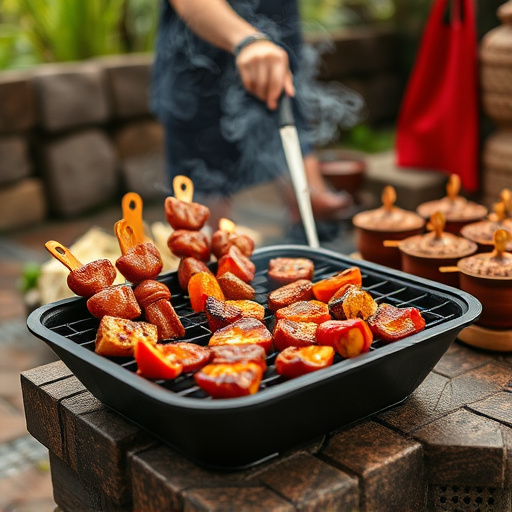
When it comes to the final touch on your oven-roasted BBQ beef ribs recipe, glazing is a game-changer. The right glaze can elevate your ribs from good to mouthwatering, adding a burst of flavor and a shiny, delectable finish. You have endless options here; barbecue sauce is a classic choice, but consider branching out with honey mustard, apple cider vinegar, or even a simple mix of brown sugar, ketchup, and a touch of Worcestershire sauce for something unique.
Apply your glaze generously during the last 15-20 minutes of cooking to let it caramelize and set, creating a sticky, sweet, and savory crust. For an extra special effect, broil your ribs briefly under a hot oven light or grill them under high heat for a few moments until the glaze shines and bubbles. This simple step can transform your BBQ beef ribs recipe into a spectacle that’s sure to impress.
Resting and Serving: Ensuring a Delicious BBQ Experience
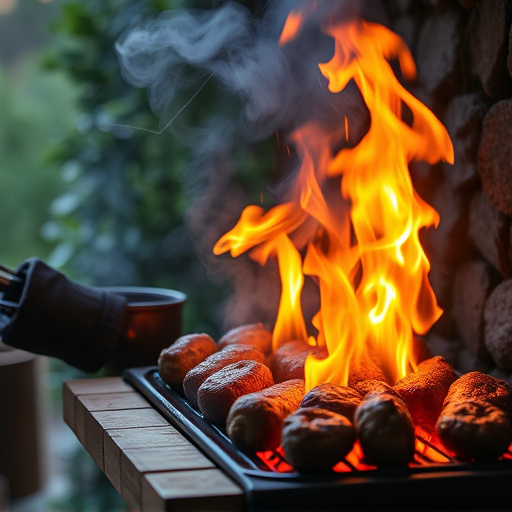
After carefully cooking your BBQ beef ribs in the oven, the next crucial step is resting and serving. Allow the ribs to rest for about 10-15 minutes before slicing or pulling them apart. This resting period allows the juices to redistribute throughout the meat, ensuring each bite is tender, juicy, and packed with flavor. It’s a simple yet essential step that significantly enhances the overall dining experience.
When it comes to serving, consider pairing your delicious BBQ beef ribs with classic sides like coleslaw, baked beans, or cornbread. Take your time to plate them beautifully, letting the aroma waft through the air as you prepare to indulge in a mouthwatering BBQ feast. Enjoy every bite and savor the perfect blend of smoky flavors achieved through this simple oven method for BBQ beef ribs recipe.
